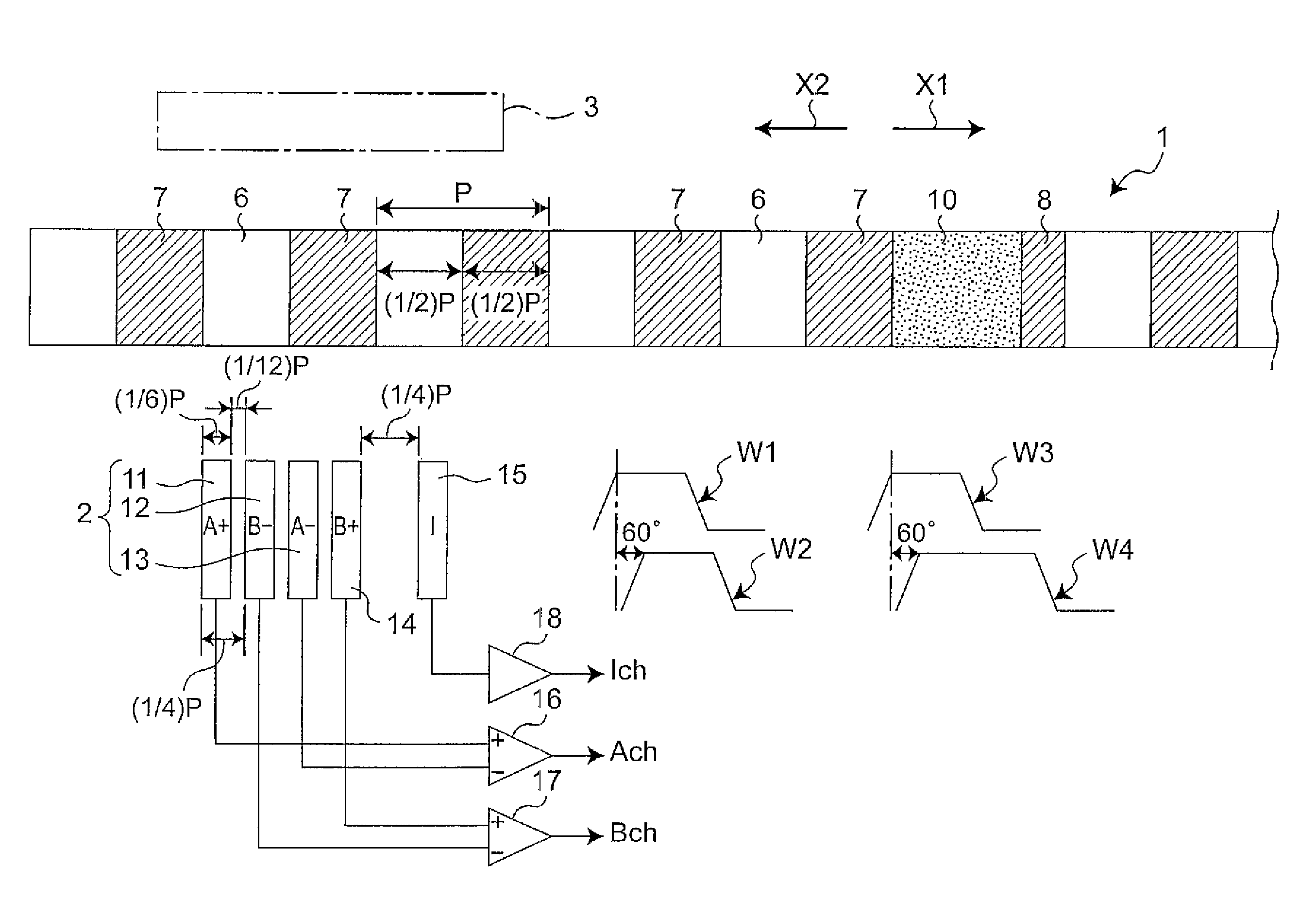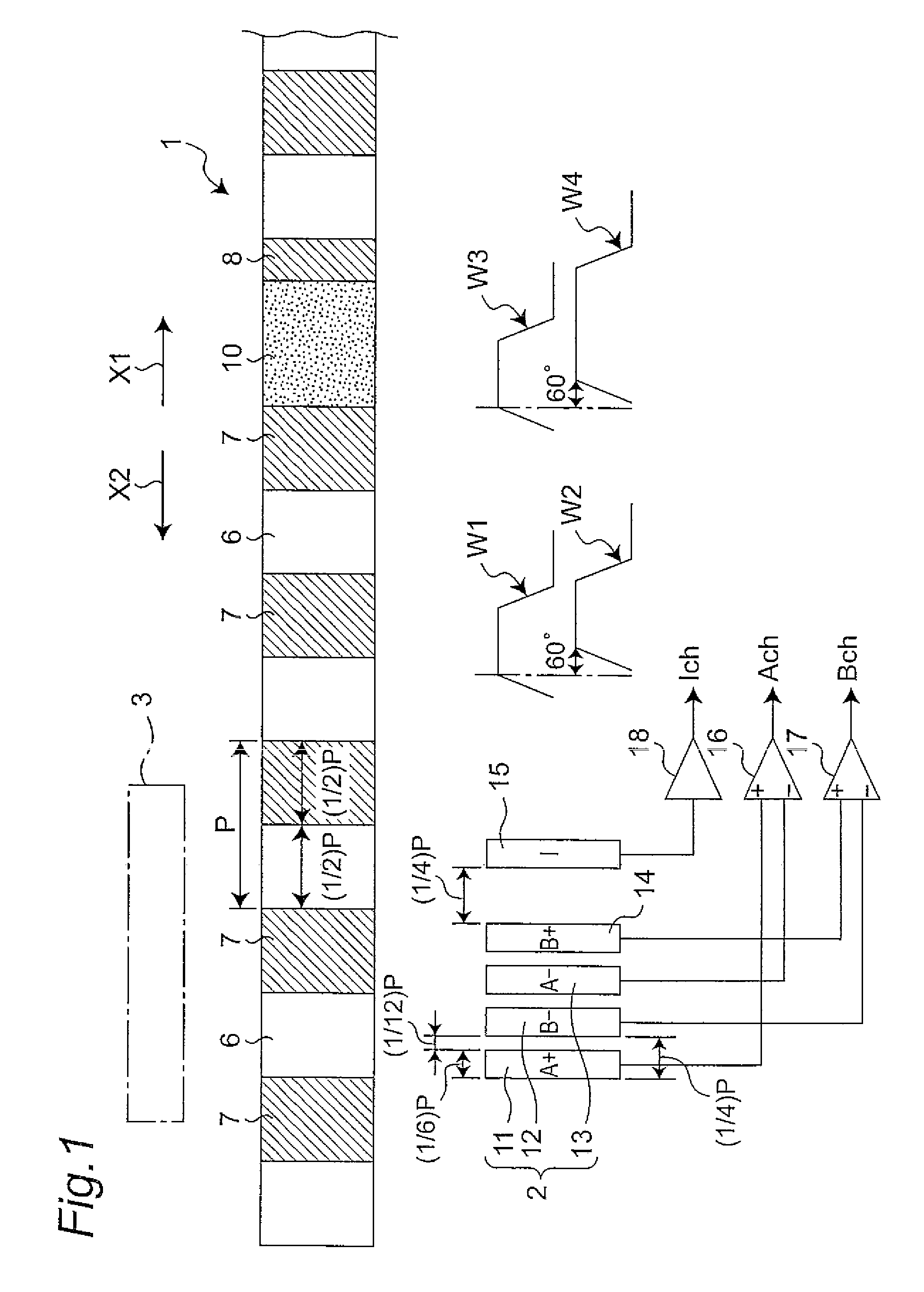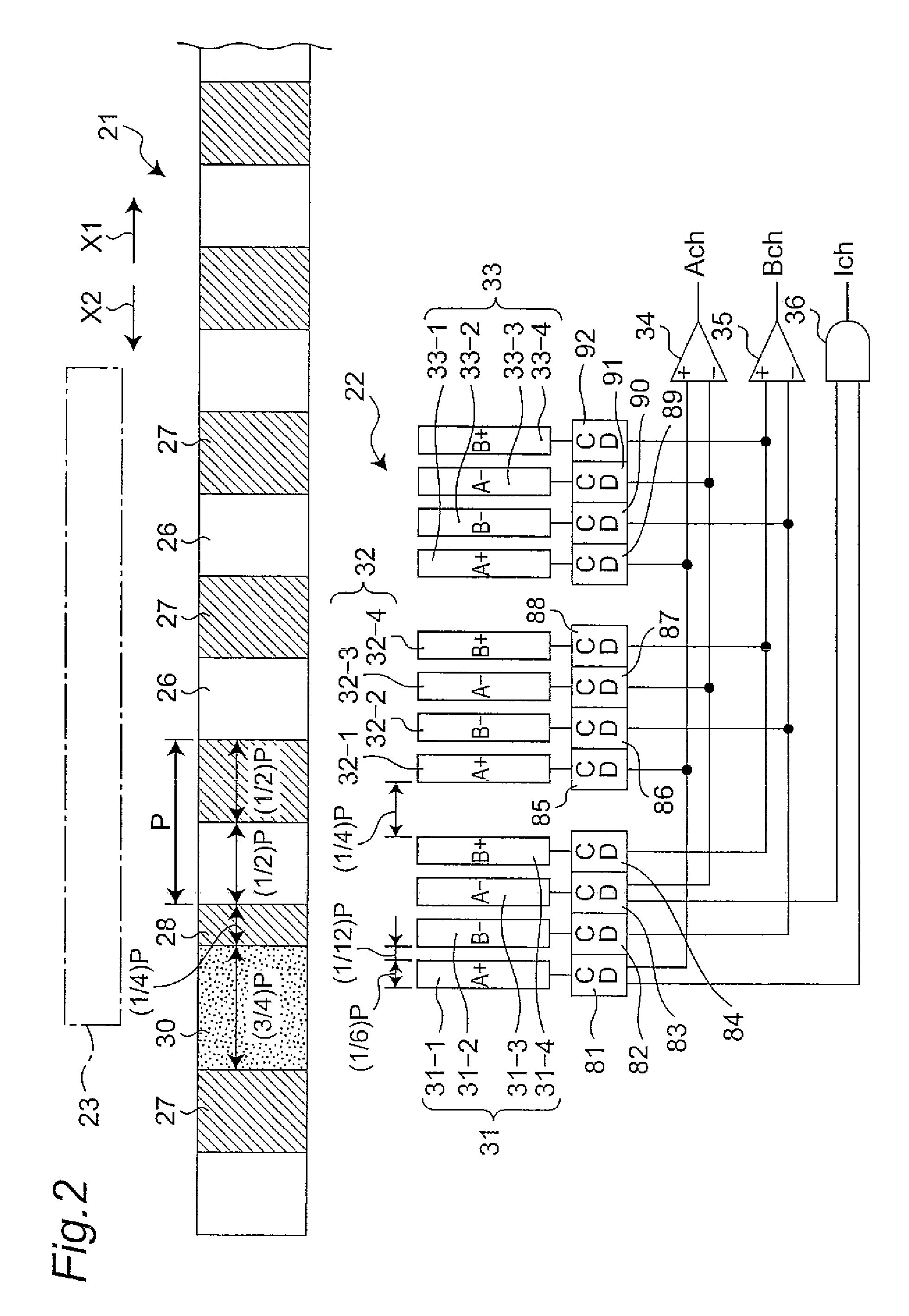Optical encoder and electronic equipment
a technology of optical encoder and electronic equipment, applied in the direction of converting sensor output optically, instruments, material analysis, etc., can solve the problems of preventing accurate detection of position and increasing cost, and achieve the effect of low cost and sufficient precision
- Summary
- Abstract
- Description
- Claims
- Application Information
AI Technical Summary
Benefits of technology
Problems solved by technology
Method used
Image
Examples
first embodiment
[0096]FIG. 1 shows an optical encoder in a first embodiment of the invention. The first embodiment is composed of a moving object 1, a light receiving section 2, and a light emitting section 3. The light emitting section 3 is constituted of light emitting elements such as LEDs (Light Emitting diodes). The light receiving section 2 has five light receiving elements 11 to 15. The moving object 1 is movable in the direction shown by arrow X1 or X2, with a light-ON section 6 and a light-OFF section 7 being alternately arranged in the moving direction. The moving object 1 has an index pattern section 10 interposed in between the light-OFF section 7 and the light-OFF section 8 in the moving direction. The light-OFF section 8 has a moving direction size (width size) shorter than that of the light-OFF section 7. The light-ON section 6 and the index pattern section 10 pass the light beam from the light emitting section 3 to the light receiving section 2 side, whereas the light-OFF section 8 ...
second embodiment
[0105]FIG. 2 shows an optical encoder in a second embodiment of the invention. The second embodiment is composed of a moving object 21, a light receiving section 22, and a light emitting section 23. The moving object 21 is movable in the direction shown by arrow X1 or X2, with a light-ON section 26 and a light-OFF section 27 being alternately arranged in the moving direction. The moving object 21 has an index pattern section 30 interposed in between the light-OFF section 27 and the light-OFF section 28 in the moving direction. The light-OFF section 28 has a moving direction size (width size) shorter than that of the light-OFF section 27. The light-ON section 26 and the index pattern section 30 pass the light beam from the light emitting section 23 to the light receiving section 22 side, whereas the light-OFF section 28 does not pass the light beam from the light emitting section 23 to the light receiving section 22 side.
[0106]The light receiving section 22 has first, second, and thi...
third embodiment
[0127]Description is now given of an optical encoder in a third embodiment of the invention with reference to FIG. 6A to FIG. 6C.
[0128]The third embodiment is composed of a moving object 41, a light receiving section 42, and a light emitting section (not shown). This light emitting section is constituted of an LED and the like. The moving object 41 is movable in the direction shown by arrow X1 or X2, with a light-ON section 46 and a light-OFF section 47 being alternately arranged in the moving direction. Moreover, the moving object 41 has an index pattern section 50, which is interposed in between index pattern side sections 44 and 49 in the moving direction. These index pattern side sections 44 and 49 do not pass the light beam from the light emitting section to the light receiving section 42 side, whereas the index pattern section 50 passes the light beam from the light emitting section to the light receiving section 42 side. The light-ON section 46 passes the light beam from the ...
PUM
 Login to View More
Login to View More Abstract
Description
Claims
Application Information
 Login to View More
Login to View More - R&D
- Intellectual Property
- Life Sciences
- Materials
- Tech Scout
- Unparalleled Data Quality
- Higher Quality Content
- 60% Fewer Hallucinations
Browse by: Latest US Patents, China's latest patents, Technical Efficacy Thesaurus, Application Domain, Technology Topic, Popular Technical Reports.
© 2025 PatSnap. All rights reserved.Legal|Privacy policy|Modern Slavery Act Transparency Statement|Sitemap|About US| Contact US: help@patsnap.com



